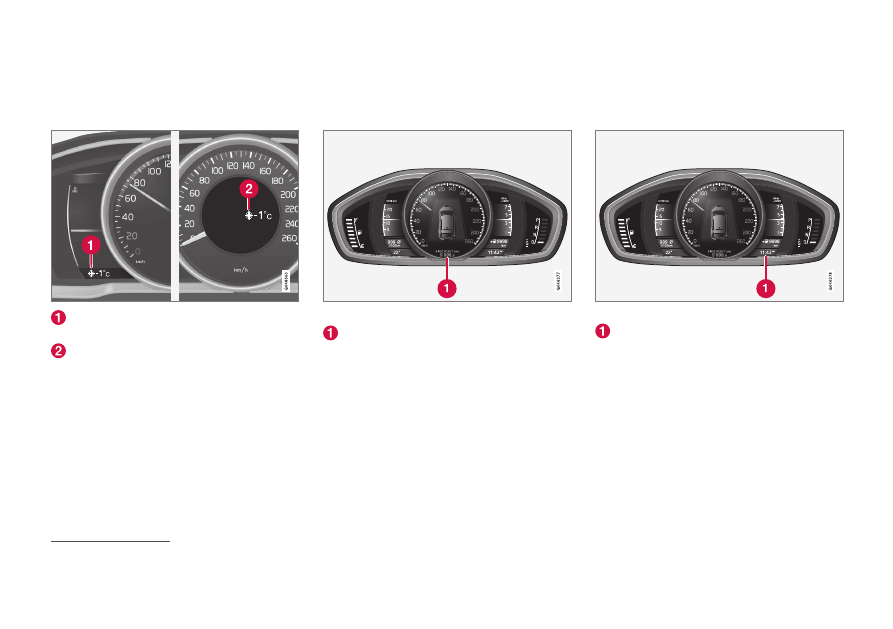Volvo V40 Cross Country (2018 year). Instruction - part 4

INSTRUMENTS AND CONTROLS
75
Outside temperature gauge
The display for the outside temperature gauge
appears in the combined instrument panel.
Display for outside temperature gauge, digi-
tal instrument panel
Display for outside temperature gauge, ana-
logue instrument panel
When the temperature lies between +2 °C to -5
°C a snowflake symbol illuminates in the display.
This warns of icy roads. If the car has been sta-
tionary, the gauge may display a reading that is
too high.
Related information
•
Combined instrument panel (p. 66)
Trip meter
The trip meter display appears in the combined
instrument panel.
Trip meter, digital instrument.
Display for trip meter
12
The two trip meters
T1
and
T2
are used for
measuring short distances. The distance is
shown in the display.
Turn the left stalk switch thumbwheel to show
the required meter.
A long press (until the change occurs) on the
left-hand stalk switch's RESET button resets the
trip meter shown. For more information, see Trip
computer (p. 114).
Related information
•
Combined instrument panel (p. 66)
Clock
The clock display appears in the combined
instrument panel.
Clock, digital instrument panel.
Display for showing the time
13
Set the clock
The clock can be adjusted in the menu system
MY CAR, see MY CAR (p. 113).
Related information
•
Combined instrument panel (p. 66)
12
Display appearance may differ depending on instrument variant.